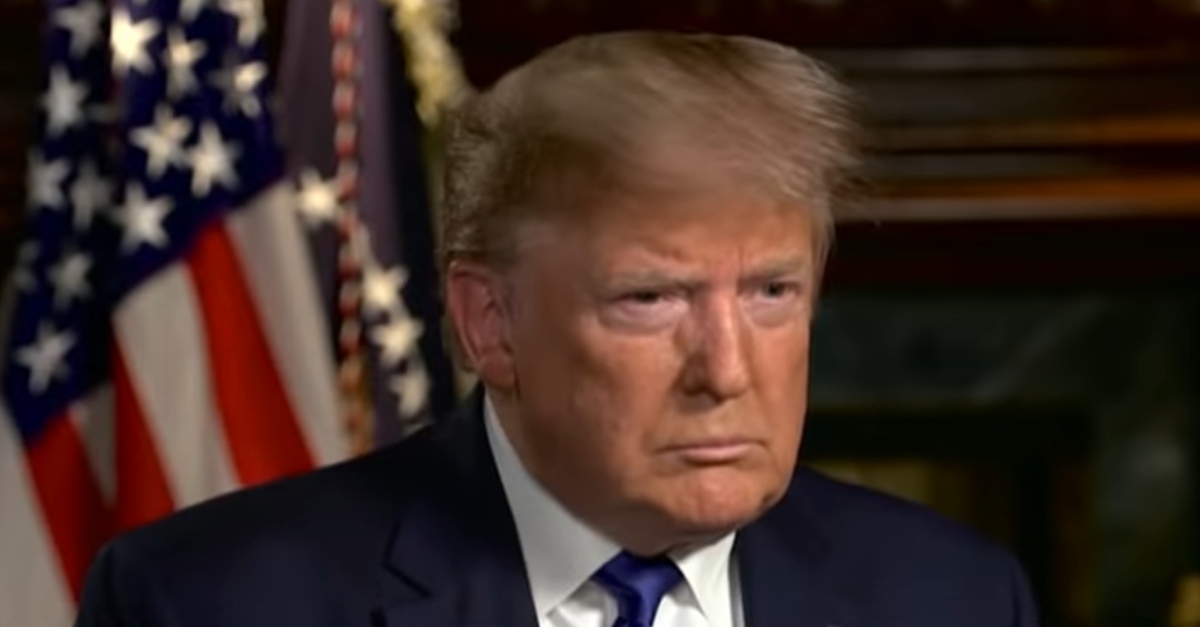
A federal appeals court in Washington, D.C. on Friday resurrected the House of Representatives’ lawsuit seeking to prevent President Donald Trump from diverting money allocated by Congress for military construction projects to build a wall along the U.S.-Mexico border.
U.S. District Judge Trevor McFadden, a Trump appointee, dismissed the House’s complaint in June, finding that the chamber lacked standing to sue the administration. But a three-judge panel on the U.S. Court of Appeals for the D.C. Circuit unanimously disagreed, citing to the court’s recent en banc decision in the case of former White House counsel Don McGahn.
“The McGahn court clearly held that a single house of Congress could have standing to pursue litigation against the Executive for injury to its legislative rights,” wrote Senior Circuit Judge David Sentelle, a Ronald Reagan appointee. Sentelle was joined in the opinion by Circuit Judges Patricia Millet and Robert Wilkins, both of whom were appointed by Barack Obama.
The lawsuit stems from negotiations between the Trump administration and the House over how much should be spent on erecting the border wall. Trump originally requested $5.7 billion in funding, of which Congress only appropriated $1.375 billion. The president responded by declaring a national emergency in February, claiming approximately $8 billion for his wall by redirecting approximately $600 million in Treasury Department forfeiture funds, $2.5 billion in Defense Department drug interdiction funds, and $3.6 billion from the military construction budget.
House Democrats filed the lawsuit in April 2019, arguing that Trump had usurped Congress’ authority by using the emergency declaration as a way to reappropriate border wall funding—despite Congress’s explicit disapproval of the expenditure. In the complaint, the House argued that Trump demonstrated “a shocking disregard” for the Constitution’s Appropriations Clause, which provides that “No Money shall be drawn from the Treasury, but in Consequence of Appropriations made by Law.”
After establishing that the House had proper standing, the court reasoned that the alleged injuries suffered by the chamber were violations of the fundamental principles of separation of power under the Appropriations Clause of the U.S. Constitution,
“The Appropriations Clause, thus, provides one foundational element of the separation between the powers of the sword of the Executive Branch and the purse of the Legislative Branch. It is a core structural protection of the Constitution—a wall, so to speak, between the branches of government that prevents encroachment of the House’s and Senate’s power of the purse,” the court wrote, failing to resist making a wall-related play on words.
The ruling then cited a certain D.C. Circuit alum-turned-Supreme Court justice to explain the constitutional stakes at hand.
“To hold that the House is not injured or that courts cannot recognize that injury would rewrite the Appropriations Clause. That Clause has long been understood to check the power of the Executive Branch by allowing it to expend funds only as specifically authorized. As then-Judge [Brett] Kavanaugh wrote for this court, the Appropriations Clause is ‘a bulwark of the Constitution’s separation of powers among the three branches of the National Government,’ and it ‘is particularly important as a restraint on Executive Branch officers.’”
The Court also took the Trump administration to task for claiming that the Executive Branch has broad autonomy to spend federal funds without congressional approval—an argument the court said “turns the constitutional order upside down.”
“Under the defendants’ standing paradigm, the Executive Branch can freely spend Treasury funds as it wishes unless and until a veto-proof majority of both houses of Congress forbids it. Even that might not be enough: Under the defendants’ standing theory, if the Executive Branch ignored that congressional override, the House would remain just as disabled to sue to protect its own institutional interests. That turns the constitutional order upside down,” Sentelle wrote.
“For that reason, expenditures made without the House’s approval—or worse, as alleged here, in the face of its specific disapproval—cause a concrete and particularized constitutional injury that the House experiences, and can seek redress for, independently. And again, failure to recognize that injury in fact would fundamentally alter the separation of powers by allowing the Executive Branch to spend any funds the Senate is on board with, even if the House withheld its authorizations,” he added.
Read the full decision below:
DC Circuit Border Wall by Law&Crime on Scribd
[image via Fox News screengrab]